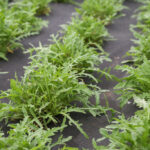Watering and fertilizing of primrose

Providing the appropriate balance of moisture and nutrients is fundamental to the health and vitality of primroses. These plants thrive in consistently moist soil, a condition that mirrors their native woodland habitats, but they are highly susceptible to rot if the ground becomes waterlogged. Therefore, the goal of watering is to maintain a steady level of hydration without causing saturation, a task that requires attention to soil type, weather conditions, and the plant’s life cycle. Fertilizing should be a complementary practice, aimed at replenishing the soil with essential nutrients to support lush foliage and vibrant blooms, typically applied in moderation at the start of the growing season. Mastering these two interconnected aspects of care is essential for cultivating robust and floriferous primrose displays.
The core principle of watering primroses is consistency. They possess a fine, fibrous root system that is not adapted to periods of drought, meaning that allowing the soil to dry out completely can cause significant stress, wilting, and even plant death. It is far more beneficial to provide deep, infrequent waterings that thoroughly moisten the root zone rather than shallow, frequent sprinklings that only wet the surface. A thorough soaking encourages the roots to grow deeper into the soil, making the plant more resilient. The frequency of watering will vary greatly depending on your climate, soil type, and the time of year, so learning to check the soil moisture with your finger is the most reliable method.
When it comes to fertilizing, less is often more with primroses. These plants are not heavy feeders, and excessive fertilization, especially with high-nitrogen formulas, can lead to lush, soft foliage at the expense of flowers and can make the plant more susceptible to pests and diseases. The best approach is to focus on building rich, healthy soil through the regular incorporation of organic matter like compost and leaf mold. This organic material breaks down slowly, providing a steady, gentle release of nutrients that is perfectly suited to the needs of primroses.
The relationship between watering and fertilizing is symbiotic. Nutrients in the soil can only be taken up by the plant’s roots when they are dissolved in water. Therefore, maintaining adequate soil moisture is essential for any fertilizer application to be effective. It is also crucial to water the soil thoroughly before applying any liquid fertilizer to avoid burning the plant’s delicate roots. By viewing watering and fertilizing not as separate tasks but as integrated components of a holistic care strategy, you can create the ideal conditions for your primroses to flourish.
Fundamental watering principles
The most fundamental principle of watering primroses is to aim for soil that is consistently moist, akin to a well-wrung-out sponge. These plants have evolved in environments where the ground rarely dries out completely, so their root systems are adapted to a steady supply of water. The key is to avoid the extremes of both drought and waterlogging. Before watering, always check the soil’s condition by inserting your finger about an inch or two deep. If the soil feels dry at that depth, it is time to water; if it still feels moist, it is best to wait.
More articles on this topic
The method of watering is just as important as the frequency. It is always best to water primroses at the base of the plant, delivering water directly to the soil and the root zone. Overhead watering, which wets the leaves and flowers, should be avoided as much as possible. Wet foliage, especially in cool or humid conditions, creates the perfect environment for fungal diseases like botrytis and powdery mildew to develop. Watering in the morning is also preferable to watering in the evening, as it gives the foliage time to dry completely before nightfall, further reducing the risk of disease.
Water deeply and thoroughly to encourage a strong, extensive root system. A light sprinkling on the surface only moistens the top layer of soil, which encourages shallow root growth and makes the plant more vulnerable to drought. A long, slow soak allows the water to penetrate deep into the soil profile, reaching the entire root zone. This practice encourages the roots to grow deeper in search of moisture, resulting in a more resilient and self-sufficient plant that is better able to withstand brief dry spells.
The type of soil in your garden has a profound impact on your watering strategy. Sandy soils drain very quickly and will need to be watered more frequently, though with smaller amounts of water each time. Heavy clay soils, on the other hand, retain moisture for much longer and will require less frequent but very careful watering to avoid becoming saturated. Improving your soil structure by adding generous amounts of organic matter is the best way to create a balanced medium that holds adequate moisture while still allowing excess water to drain away freely.
Adjusting watering for seasons and climate
Watering needs for primroses are not static; they change dramatically with the seasons and must be adapted accordingly. In the spring, during their period of active growth and flowering, primroses have their highest demand for water. The combination of rising temperatures, increased sunlight, and the energy expenditure of producing blooms means you must monitor soil moisture closely. This is a critical time when consistent hydration will directly impact the quality and duration of the floral display. Ensure the soil remains evenly moist as the plants leaf out and come into flower.
More articles on this topic
As summer arrives and temperatures climb, the watering strategy must shift to focus on survival and stress reduction. While the plants may not be actively growing, they are highly vulnerable to heat and drought. Even though they are in a partially shaded location, hot and windy weather can dry out the soil quickly. During prolonged dry spells, deep and regular watering is essential to keep the root zone cool and hydrated. However, be cautious not to overwater, as dormant crowns in hot, wet soil can be prone to rot. It is a delicate balance of providing enough moisture to prevent desiccation without creating stagnant, waterlogged conditions.
Autumn brings a reprieve from the summer heat and often an increase in natural rainfall. This season can trigger a second phase of root growth as the soil is still warm but air temperatures are cooler. You should adjust your supplemental watering based on the amount of rainfall your garden receives. Continue to check the soil moisture and water as needed to ensure the plants have the resources to establish strong roots before winter. Proper hydration in autumn helps prepare the plant for the stresses of winter dormancy and contributes to its vigor the following spring.
During the winter, primroses enter a dormant state, and their water requirements are minimal. In most temperate climates with regular precipitation, supplemental watering is rarely necessary for garden-grown plants. The primary concern in winter is not dryness, but excessive wetness. Ensure your primroses are planted in a well-draining location where water does not pool. For primroses grown in containers, watering should be reduced significantly. Allow the soil to dry out slightly between waterings, providing just enough moisture to prevent the root ball from desiccating completely.
Understanding primrose nutritional needs
Primroses are not considered heavy feeders, meaning they do not require large amounts of fertilizer to perform well. Their nutritional needs are best met by cultivating a soil that is rich in organic matter, which provides a slow, steady release of a wide range of essential macro and micronutrients. The most important nutrient for primroses is phosphorus, which plays a crucial role in root development and flower production. Potassium is also vital for overall plant health, disease resistance, and the efficient use of water. Nitrogen, while necessary for leafy growth, should be available in more moderate amounts, as an excess can promote weak, floppy foliage at the expense of flowers.
The ideal way to provide these nutrients is by mimicking the natural environment of a forest floor, which is constantly being enriched by decomposing leaves and other organic debris. Amending the soil with well-rotted compost, leaf mold, or aged manure at the time of planting provides an excellent nutritional foundation. This can be supplemented with an annual top-dressing of the same materials applied around the base of the plants in early spring. This slow and steady approach to feeding builds soil health over time and provides a balanced diet that is perfectly suited to the modest needs of primroses.
There are situations where a supplemental application of a formulated fertilizer may be beneficial. For example, primroses grown in containers have limited access to soil nutrients and will deplete the resources in their potting mix over time. In this case, a balanced liquid fertilizer, diluted to half-strength, can be applied every two to four weeks during the active growing and flowering season in spring. Similarly, plants growing in very poor or sandy soil may benefit from a boost provided by a granular, slow-release fertilizer designed for flowering plants, applied once in early spring as new growth emerges.
It is important to recognize the signs of potential nutrient deficiencies in your primroses. A general yellowing of the leaves, especially the older ones, can indicate a nitrogen deficiency. Leaves that are small and stunted with a purplish tint might be lacking phosphorus. Yellowing between the leaf veins, while the veins themselves remain green, is often a sign of a magnesium or iron deficiency. However, these symptoms can also be caused by other issues like poor drainage or incorrect soil pH, so it is essential to consider all factors before reaching for the fertilizer. Often, improving the soil with organic matter is the best and most sustainable solution.
Choosing and applying the right fertilizer
When a supplemental fertilizer is deemed necessary, choosing the right formulation is key. For primroses, it is best to select a balanced fertilizer where the N-P-K (Nitrogen-Phosphorus-Potassium) numbers are relatively even, or one that is slightly higher in phosphorus to specifically encourage blooming. A formula such as 5-10-5 or 10-10-10 is generally suitable. Avoid high-nitrogen fertilizers, such as those formulated for lawns, as this will stimulate excessive, soft leaf growth that is attractive to pests and may inhibit flower production. Slow-release granular fertilizers are an excellent choice for garden plants as they provide a steady supply of nutrients over several months from a single application.
The timing of fertilizer application is critical for it to be used effectively by the plant. The best time to fertilize primroses is in the early spring, just as they are breaking dormancy and beginning to show new signs of growth. This provides them with the nutrients they need to fuel the development of strong leaves and abundant flowers. A single application of a slow-release granular fertilizer or a top-dressing of rich compost at this time is usually sufficient for the entire year for garden-grown plants. Avoid fertilizing late in the season, as this can encourage tender new growth that may be damaged by early frosts.
The method of application requires care to avoid damaging the plant. If using a granular fertilizer, sprinkle the recommended amount evenly on the soil surface around the plant, being careful not to let the granules come into direct contact with the leaves or the crown, as this can cause fertilizer burn. Gently scratch the granules into the top inch of soil and then water the area thoroughly. If you are using a liquid fertilizer, which is common for container plants, always dilute it according to the manufacturer’s instructions—or even to half-strength to be safe—and apply it to already moist soil.
Organic alternatives are often the superior choice for fertilizing primroses as they feed the soil as well as the plant. Top-dressing with a layer of high-quality garden compost or leaf mold is an excellent practice that provides a balanced range of nutrients and improves soil structure. Other organic options include bone meal, which is a great source of phosphorus, and well-rotted manure. These materials break down slowly, releasing their nutrients gradually and reducing the risk of over-fertilization. Embracing an organic approach aligns perfectly with the goal of creating a sustainable, healthy growing environment for your primroses.
Common mistakes in watering and feeding
One of the most frequent and damaging mistakes in primrose care is overwatering. Driven by the knowledge that primroses like moist soil, many gardeners provide too much water, leading to saturated, anaerobic conditions that suffocate the roots. This is especially problematic in heavy clay soils. The signs of overwatering can paradoxically mimic those of underwatering—wilting, yellowing leaves—leading the gardener to water even more. The key is to always check the soil before watering and to prioritize improving drainage, which is the only long-term solution to prevent waterlogging and the subsequent risk of crown and root rot.
On the opposite end of the spectrum, allowing the soil to dry out completely is equally detrimental. Forgetting to water during a hot, dry spell in summer can quickly lead to the decline or death of a primrose, even an established one. This is a common issue for primroses in containers, which have a much smaller soil volume that can dry out in a matter of hours on a hot day. The mistake is often one of inconsistency—providing sporadic, heavy waterings interspersed with periods of neglect. A regular, consistent watering schedule based on the plant’s actual needs is far more effective.
In terms of feeding, the most common error is over-fertilizing. Believing that more food will result in more flowers, gardeners can apply too much fertilizer or use a formulation that is too high in nitrogen. This leads to a cascade of negative effects: weak, succulent growth that is prone to pests and physical damage, a potential buildup of fertilizer salts in the soil that can burn roots, and often, a reduction in flowering as the plant’s energy is diverted into producing excess foliage. Primroses thrive on a lean diet, and it is always better to under-fertilize than to over-fertilize.
Finally, a significant mistake is ignoring the foundational role of soil health. Relying solely on chemical fertilizers to provide nutrition without addressing the underlying soil structure and organic content is a short-sighted strategy. Healthy soil, rich in organic matter, provides a buffer against both over- and under-watering, and it delivers a complex, slow-release diet of nutrients that synthetic fertilizers cannot replicate. The mistake is treating the plant as an isolated system rather than as part of a soil ecosystem. Focusing on building great soil is the most effective way to avoid most common watering and feeding problems.


















